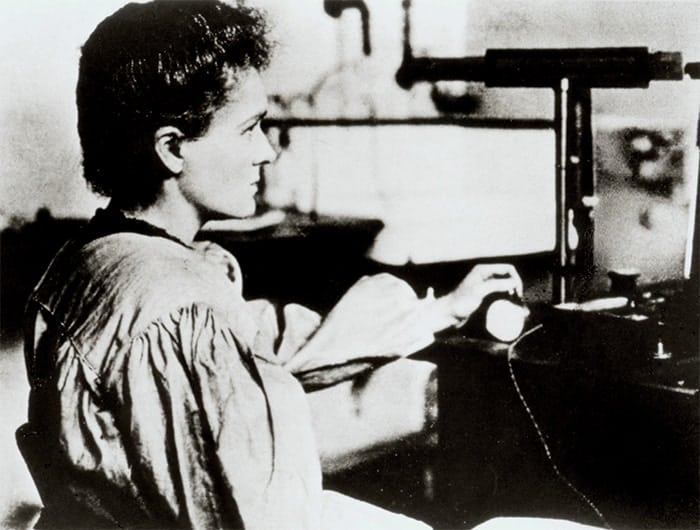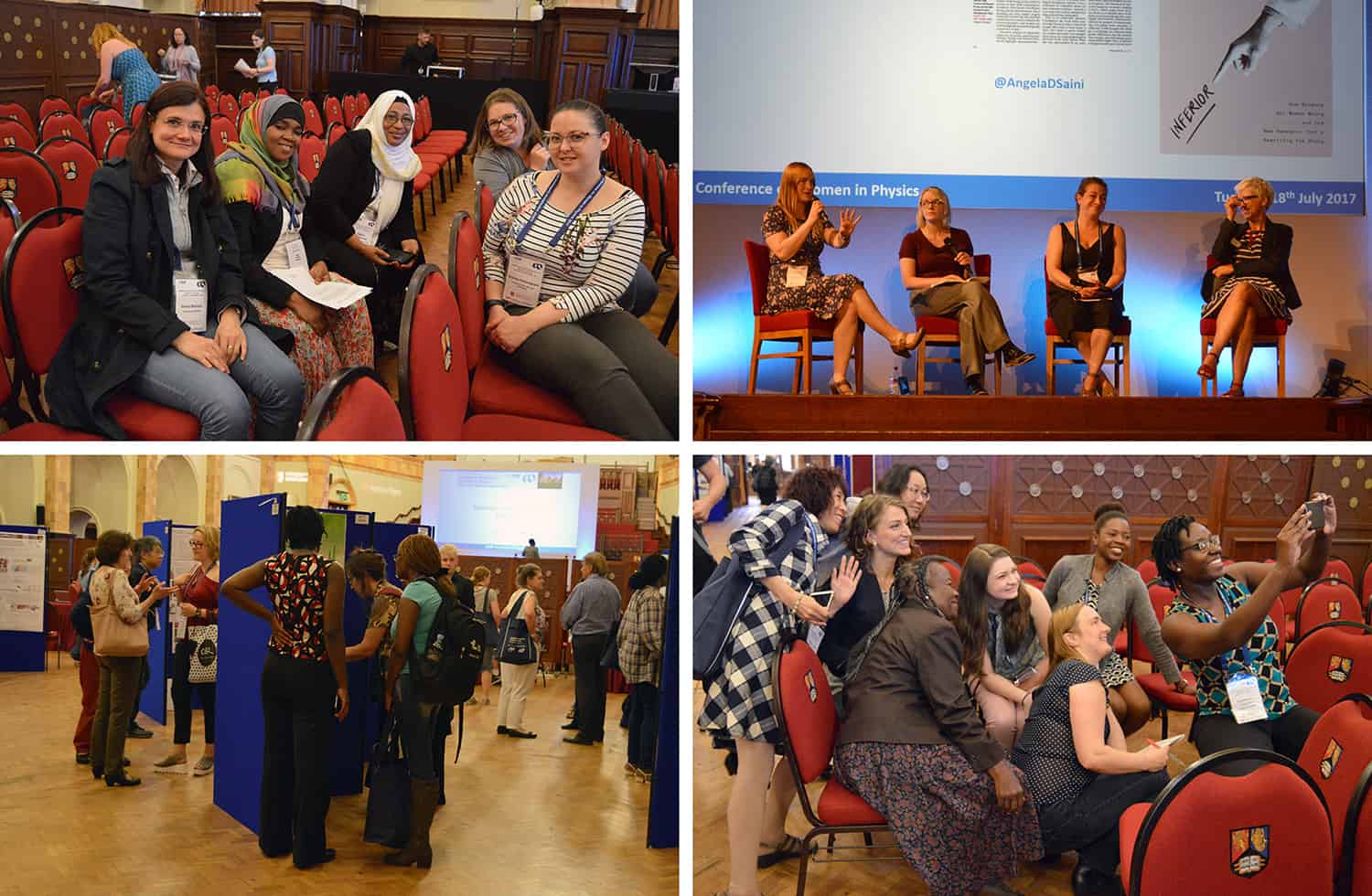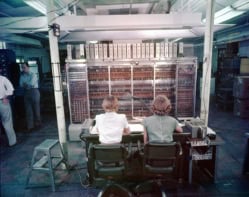Tushna Commissariat reviews The Glass Universe: How the Ladies of the Harvard Observatory Took the Measure of the Stars by Dava Sobel

Browse through the Hubble Space Telescope’s “Top 100 Images” catalogue and you will undoubtedly be amazed by pictures of stellar clusters. Each image shows vast swathes of inky black embedded with hundreds upon thousands of stars, varying in size and brightness from a tiny pinprick to a dazzling splash. Many, if not most, of these celestial objects are logged and classified in online databases such as the Set of Identifications, Measurements, and Bibliography for Astronomical Data (SIMBAD). As of this year, 9,099,070 objects beyond our solar system are logged in SIMBAD. In this age of big data and fast computing, these numbers do not seem that unwieldy.
But imagine that such online resources or even a mechanical computer were not available. This was the conundrum faced by astronomers in the mid-19th century, as modern astrophysics took off thanks to the advent of photographic techniques and devices such as large refractor telescopes. US astronomer and director of Harvard College Observatory (from 1877) Edward Charles Pickering decided to hire women as “human calculators” to process the ever-growing amounts of astronomical data.
Pickering employed up to 80 women during his 42-year stint as director, at a time when women still did not even have the right to vote. This team of gifted and talented women went on to make huge contributions to astronomy as we know it today, and author Dava Sobel tells their untold tale in her latest book – The Glass Universe: How the Ladies of the Harvard Observatory Took the Measure of the Stars.
Sobel is a seasoned science writer and a former New York Times science reporter. Her 1995 book Longitude was a bestseller and won numerous awards. She followed it up with a variety of historical-science books including Galileo’s Daughter and, most recently, A More Perfect Heaven. The Glass Universe opens in 1882 at a glitzy dinner party hosted by American doctor and amateur astronomer Henry Draper (a pioneer of astrophotography) and his wife Anna. The inside of the Drapers’ Madison Avenue mansion was lit by incandescent lamps – something that not even the White House could boast at the time. Thomas Edison (a personal friend of the Drapers) was himself in attendance along with a bevy of science luminaries, who were all in town for a meeting of the National Academy of Sciences. This opening description sets the scene for the Drapers’ love of science, though to call Henry Draper an amateur astronomer is somewhat of a misnomer. He was a doctor who quit his medical practice in 1873 to pursue astronomy and had taken one of the early images of a stellar spectrum that showed absorption lines.

Curing the Curie complex
Anna used to assist her husband in his observations – from calling out the exact 165 seconds of totality during the 1878 solar eclipse to spending nights helping him with the photographic plates that captured stellar spectra. Five days after their celebrity-studded party, however, Henry Draper died from double pleurisy at the age of 45. Anna resolved to carry on with Henry’s work herself, more specifically his spectral imaging of some of the brightest stars in the night sky. It was this research that led Pickering to Anna, as he offered to analyse the spectral patterns using specialized equipment at Harvard.
Upon a visit to Harvard to hand over Henry’s plates, she was surprised to find that six of the computers at Harvard were women. Some of these were the wives, sisters and daughters of resident astronomers, but they also included recent graduates from new women’s colleges such as Vassar and Wellesley, whereas others simply showed mathematical promise.
Pickering always struggled to keep the observatory financially afloat and one way of doing this was to hire women as computers, as he could hire many more women at the same budget. But this was not the only reason – according to Sobel, Pickering advocated for women’s rights and felt that hiring women who had just graduated from the new colleges was a good way to silence naysayers who felt that higher education for women was a waste.
In 1886, two years after her first visit, Anna Draper decided to fund Pickering’s project of creating a photographic stellar spectra catalogue at Harvard, setting up the Henry Draper Memorial. Her funding enabled the work of many female computers and scientists, and would lead to the Henry Draper Catalogue (published between 1918 and 1924), which spectroscopically classified 225 300 stars and helped build the observatory’s collection of half a million glass photographic plates that remain until today.
An early talent noticed by Pickering was a Scottish woman by the name of Williamina Fleming, who was originally hired as his maid in 1879. The story goes that Pickering was often frustrated with the abilities of his all-male computing group and would complain that his “Scottish maid could do better”. This turned out to be a bit of an understatement as Fleming began as a part-time computer at Harvard and ultimately went on to identify 10 novae and more than 300 variable stars, discovered the Horsehead nebula in 1888 and classified most of the stars in the Draper catalogue.

Zombie girls: a history
Fleming also developed an early stellar classification system based on a star’s hydrogen content. This was later improved upon by Annie Jump Cannon, another female computer who became part of Pickering’s group – or “Pickering’s harem” as it was being referred to – in 1886. Cannon developed the basic version of the temperature-dependent stellar classification system still in use today. It is clear from the book that Cannon was a particular favourite of Sobel, who said as much in an interview with the Atlantic – Sobel delved into the archive of diaries that Cannon meticulously maintained throughout her life, which reveal Cannon’s unpretentiousness and wit.
Many other stalwarts in the field were to become a part of the “Harvard Computers”. They range from Antonia Murray – best known for her spectroscopic analysis of the binary star Beta Lyrae – to Henrietta Swan Leavitt, who discovered the relationship between the luminosity and the period of Cepheid variable stars. This link in turn helped astronomers to measure the distance between Earth and distant galaxies, and eventually allowed Edwin Hubble to determine that our universe is expanding. It also enabled Cecilia Helena Payne-Gaposchkin to become one of the first women to receive a PhD in astronomy (for studying stellar atmospheres). She also became the first ever woman professor of astronomy at Harvard in 1956 and, eventually, the university’s first female department chair.

‘One woman can change a lot if she is determined’
Sobel is an extremely adept historical writer and researcher, and has scoured through vast amounts of letters, diaries, memoirs and all of the archival material that Harvard had to offer in penning this book, which spans from the mid-1800s to just after the Second World War. She has woven in many details about the lives, loves, fears, frustrations and achievements of each of the main characters, as well as describing life at the observatory at that time. But the book focuses squarely on the people working at or with the Harvard Observatory, and although it follows its characters as they travel to exotic destinations such as Peru, you may be left wondering about the state of women in astronomy elsewhere in the US and beyond. Another gripe is that Sobel introduces many people in each chapter, but most get only a fleeting mention. As someone who struggles to remember names, I did find myself flipping back and forth to discern a particular individual if they were not one of the main characters.
Nevertheless, The Glass Universe is a fascinating story and Sobel an admirable writer. The book does an excellent job of setting the stage for two other recent books along a similar vein – Nathalia Holt’s Rise of the Rocket Girls and Margot Lee Shetterly’s Hidden Figures, which has also been adapted into an Oscar-winning film and tells the story of the women computers at NASA in the mid-1900s.
As more and more stories of overlooked contributions of women in science come to light, I can’t help but wonder how many such tales will never get told. I also can’t help but hope that today’s female researchers get their due and never need to be postscripted into history.
- 2017 Fourth Estate 336pp £16.99hb



